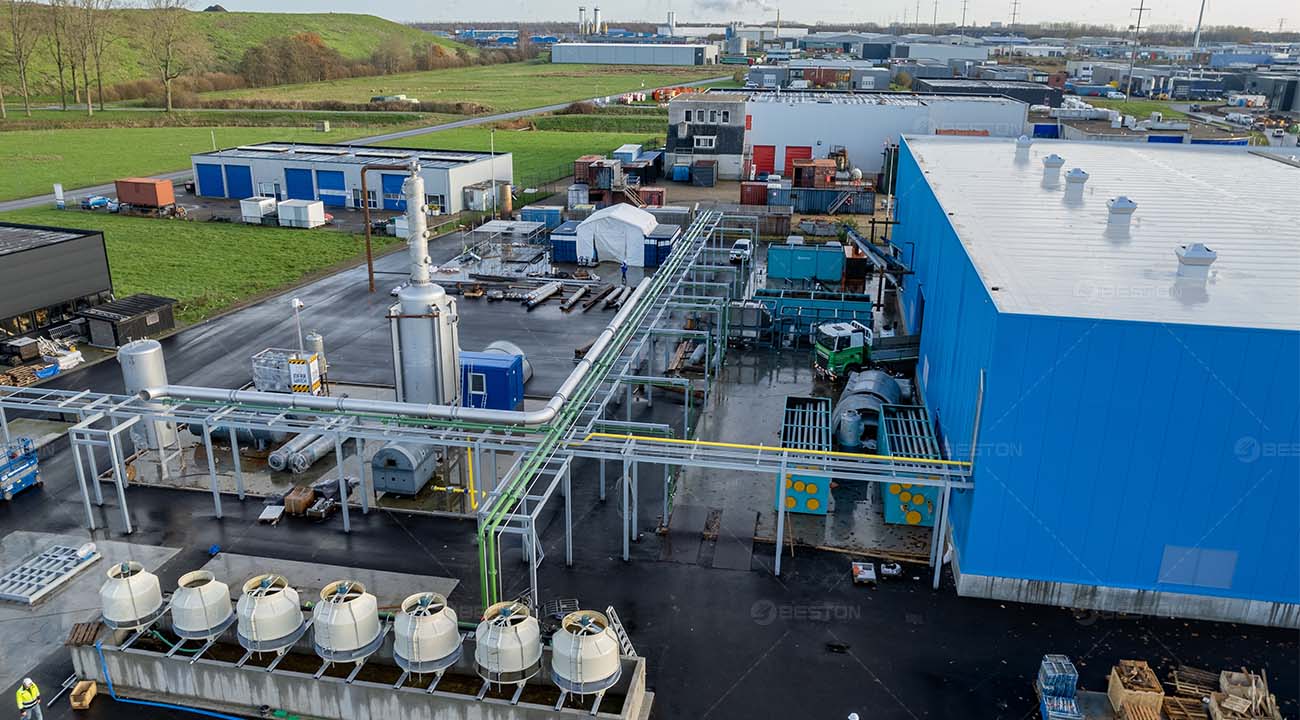Introduction
In the modern landscape of industrial challenges, few issues rival the urgency of addressing plastic waste. Amid this pressing concern, innovative solutions have emerged, and at the forefront stands the plastic pyrolysis plant. This article delves into the intricacies of these plants, unveiling the core components that power their operation, guiding the meticulous process of selecting reliable suppliers, and probing the profound implications of their environmental impact assessment.
Unveiling Core Components
Pyrolysis Reactor: Crucible of Transformation
The essence of the plastic pyrolysis plant resides within its pyrolysis reactor—a high-temperature chamber engineered for catalytic thermal decomposition. This core component initiates the metamorphosis of plastic materials through a heat-intensive process devoid of oxygen. The catalytic bed propels the fragmentation of complex polymers, yielding a spectrum of outputs including pyrolysis oil, combustible gases, and solid char residues.
Condenser System: Resource Recovery Nexus
Embedded within the system architecture is the condenser—a strategic apparatus pivotal for the transition from vapor to liquid. During pyrolysis, plastic undergoes a metamorphosis into vapors rich in hydrocarbons. The condenser intercepts this vapor, initiating a rapid cooling process that reinstates their liquid state, birthing a mixture of pyrolysis oil and aqueous byproducts. This resourceful system concurrently salvages valuable compounds and facilitates heat exchange, resonating with the ethos of energy optimization.
Control System: Precision Orchestrator
The orchestration of plastic pyrolysis unfurls under the watchful gaze of the control system—a technological enabler that epitomizes precision. Empowered by automation and real-time monitoring, this cerebral cortex oversees the dynamic interplay of temperature gradients, pressure modulation, and reaction kinetics within the pyrolysis reactor. It is the guardian of operational safety, steering the intricate course of plastic transformation with unwavering accuracy.

Selecting Suppliers with Acumen
Technical Proficiency and Industry Stature
The cornerstone of a successful plastic pyrolysis enterprise lies in the careful selection of suppliers—a process that demands discernment. Years of industry immersion, punctuated by a proven track record, serve as hallmarks of technical proficiency. Beyond mere transactions, it is the supplier’s capability to furnish systems with inherent resilience and innovative edge that paves the way for operational excellence.
Collaboration and Customization Nexus
The dynamic nature of plastic pyrolysis necessitates suppliers who are not mere purveyors of pyrolysis plant for sale but collaborative partners. A preeminent supplier engages in dialogue, deciphering unique operational requisites and tailoring solutions that harmonize with specific objectives. A malleable approach to customization, rooted in technical acumen, reflects a supplier’s commitment to synergizing their expertise with the client’s vision.
Gauging Environmental Impact
Waste Diversion and Circular Economy
Plastic pyrolysis embodies a transformational juncture where waste metamorphoses into a conduit of resource renaissance. This process intercepts the trajectory of plastic waste, redirecting it from landfills and incinerators. As plastic materials undergo thermal deconstruction, they yield valuable outputs that align with the principles of a circular economy, reintroducing components into the production cycle.
Emission Mitigation and Air Quality Enhancement
The environmental ethos of plastic pyrolysis extends beyond waste diversion—it resonates in the realm of emissions. Traditional incineration processes unleash harmful gases into the atmosphere, contributing to air pollution and climate imbalance. Conversely, plastic pyrolysis attenuates emissions, curtailing the release of toxic compounds and particulate matter. This shift translates to tangible benefits for air quality and public health.
Mitigating Environmental Concerns
Residue Management and Secondary Pollution
The pursuit of environmental stewardship doesn’t end with the transformation of plastic. Residues generated during pyrolysis necessitate prudent management strategies to circumvent potential secondary pollution. Employing appropriate disposal methodologies ensures that the residues, which encompass solid char and byproducts, are treated in a manner that aligns with sustainability objectives and minimizes ecological ramifications.
Regulatory Alignment and Ethical Conduct
The realm of plastic pyrolysis operates within a regulatory framework that mandates alignment with emission standards and waste management protocols. Suppliers and operators are tasked with upholding these directives, engendering ethical practices that resonate with environmental integrity. Ensuring compliance with regulations elevates the industry’s contribution to sustainable development and accentuates its role as an ally in waste management.
Conclusion
The intricacies of plastic pyrolysis plants beckon us to explore the nexus of technology, responsibility, and environmental guardianship. As we navigate the labyrinthine pathways of components, supplier choices, and environmental ramifications, the trajectory of plastic waste takes a transformative course. The holistic view underscores the power of innovation to reframe challenges as opportunities—opportunities that, when embraced, propel us toward a future where the realms of technology and sustainability merge seamlessly.

Comments
No comments yet. Be the first to react!